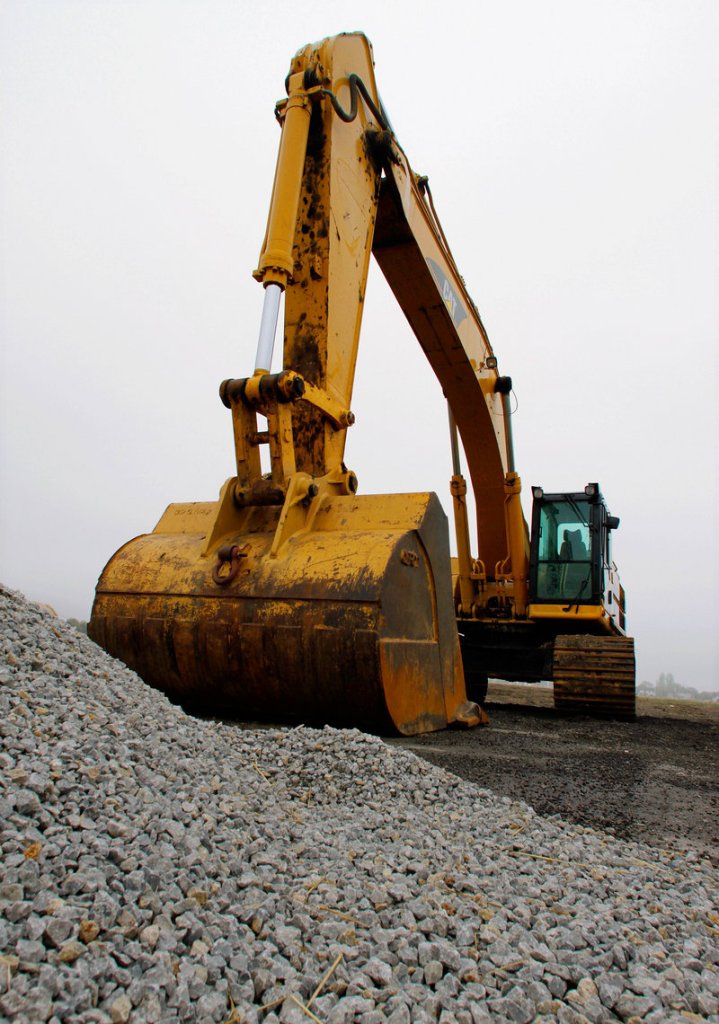ST. LOUIS – Heavy equipment maker Caterpillar Inc. said Friday its first-quarter profit soared more than fivefold and raised its financial outlook for the year as a growing economic recovery boosted demand for its mining and construction equipment.
The results blew past analysts’ expectations and its shares rose $2.72, or 2.4 percent, to $115.36 in midday trading.
Caterpillar’s earnings are a bellwether for the global economy, as it sells the kind of kind of expensive, heavy machinery used for construction, mining and logging.
Its first-quarter profit reflects an industrial sector that is growing again, with most of its sales growth coming from the sale of big machines. When the recession hit in 2007, construction and mining companies cut back their spending on heavy machinery first, Mike DeWalt, Caterpillar’s director of investors told analysts Friday.
For more than two years, companies held back their investment. But now they appear to have no choice but to replace aging machinery, boosting Caterpillar’s sales, DeWalt said. That means spending will likely continue as companies replace more vehicles and even expand on growing demand.
“Let’s be clear: This is not some kind of bubble,” DeWalt said. “We believe (companies are) essentially buying enough to keep their fleets from continuing to degrade.”
The Peoria, Ill., based company said its net income climbed to a record $1.23 billion, or $1.84 per share, for the quarter ended March 31. That’s up from $233 million, or 36 cents per share, a year ago. Revenue rose 57 percent to $12.95 billion from $8.24 billion a year ago.
Analysts had expected earnings of $1.30 a share on revenue of $11.43 billion.
Revenue at Caterpillar’s machinery and power systems division surged to $12.29 billion from $7.55 billion during the same period last year.
Based on its higher-than-expected sales, Caterpillar boosted its 2011 outlook, forecasting revenue between $52 to $54 billion and net income between $6.25 and $6.75 per share. It previously forecast revenue above $50 billion and net income of roughly $6 per share. The company said its projection does not include its recent acquisitions of MWM Holding GmbH or Bucyrus International, Inc. because the deals haven’t closed yet.
Caterpillar said its outlook would have been higher if not for the earthquake and tsunami in Japan, which damaged many of its suppliers. Supply disruptions and delays will likely cost the company $300 million on lost sales and $100 million in lost profit.
Still, the underlying economics look good for future profit increases at Caterpillar, said Bill Selesky, an analyst with Argus Research. As global demand increases, mining, construction and timber companies should all need to buy more equipment.
“You have a big, multinational company with a global footprint all around the world seeing greater demand,” Selesky said. “That gives me hope that we’re dealing with a growing economic recovery that hopefully is sustainable and that will get better as time goes by.”terest rates at record lows. That motivated investors to continue buying risky investments such as small stocks.
The Russell has soared 77 percent over the past two years. Small-company stocks tend to rise more quickly than the overall market as the economy emerges from a recession. Investors also see them as likely takeover targets for larger companies that are flush with cash. The Russell rose 3.74 points, or 0.4 percent, to 865.29 Friday.
Goodyear Tire & Rubber Co. rose 12 percent, the most of any company in the Standard & Poor’s 500 index, after it set a company sales record and reversed its loss from the first quarter of last year.
Coinstar Inc. rose 5 percent after the owner of Redbox DVD rental kiosks posted a 32 percent increase in its net income.
Research In Motion Ltd. fell 14 percent after the maker of the BlackBerry slashed its earnings and sales forecasts because of weak phone sales.
The dollar fell to a three-year low against an index of six major currencies. It’s down 7.6 percent this year.
The dollar has been sinking against other currencies that have higher interest rates than the U.S. Low interest rates in the U.S. also encourage investors to borrow in dollars to buy investments denominated in other currencies, which also pushes the dollar lower.
Two stocks rose for every one that fell on the New York Stock Exchange. Trading volume was 3.7 billion shares.
Copy the Story Link
Send questions/comments to the editors.



Success. Please wait for the page to reload. If the page does not reload within 5 seconds, please refresh the page.
Enter your email and password to access comments.
Hi, to comment on stories you must . This profile is in addition to your subscription and website login.
Already have a commenting profile? .
Invalid username/password.
Please check your email to confirm and complete your registration.
Only subscribers are eligible to post comments. Please subscribe or login first for digital access. Here’s why.
Use the form below to reset your password. When you've submitted your account email, we will send an email with a reset code.